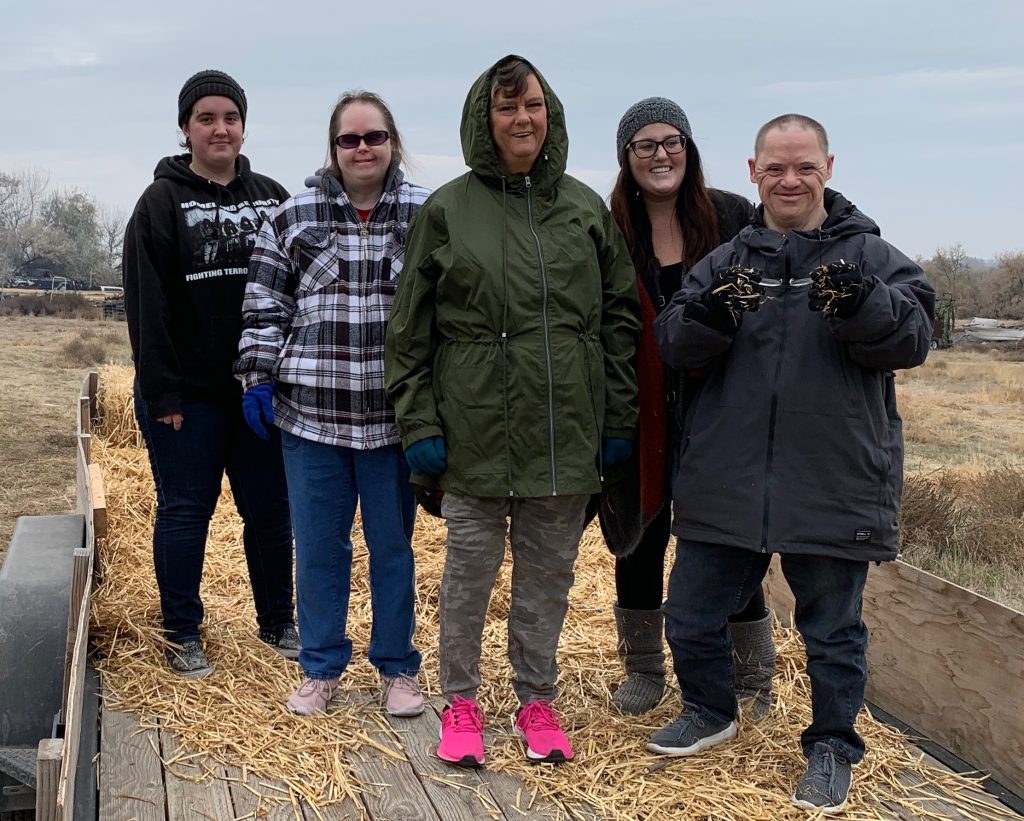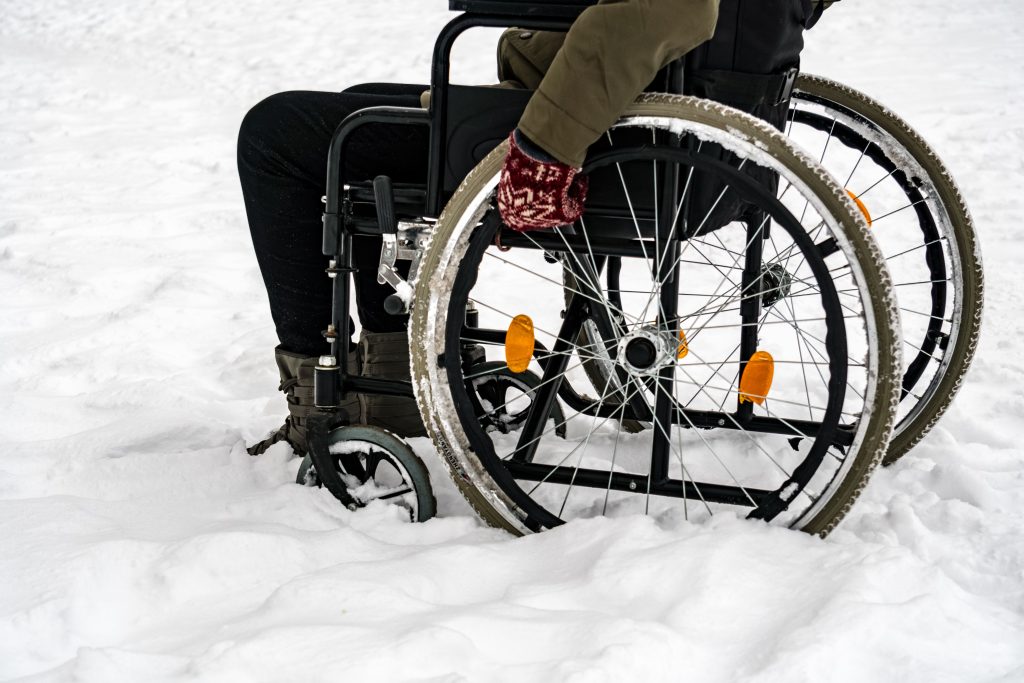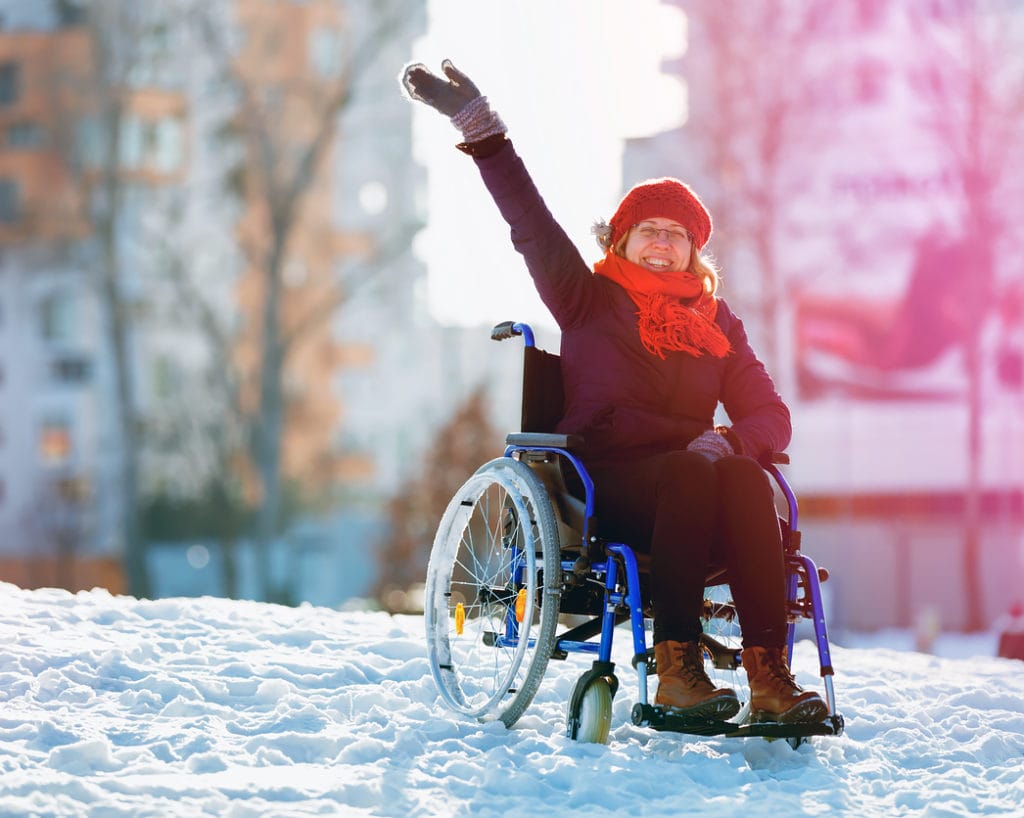
“Winter weather brings with it safety hazards for people with disabilities. Inaccessible walkways and freezing temperatures are two of the most common obstacles, but there are many other challenges that require careful planning and consideration.” [1]
“People with disabilities may want to take extra care during the cold weather season. Some disabling conditions may limit sensory abilities and the ability to maintain body heat, so be particularly careful about staying warm when you are out in low temperatures.” [2]
See below some important tips:

1) Be prepared before a winter storm hits by planning ahead an emergency action plan. Winter storms can last a few hours or several days.
Winter storms create a higher risk of car accidents, hypothermia, frostbite, carbon monoxide poisoning, and heart attacks from overexertion. Winter storms including blizzards can bring extreme cold, freezing rain, snow, ice and high winds.
2) “Wear multiple layers of clothing, including a scarf around your neck, a winter hat, lined boots and two pairs of socks. If possible, wear thermal gloves underneath your mittens to keep your hands warm. Wear waterproof, insulated boots to keep your feet warm and dry and to maintain your footing in ice and snow.” [2]
3) “Sign up for local alerts and warnings. Create and test an emergency communication plan. If you receive home-based care (e.g., homecare attendant, home health aide, visiting nurse service), include caregivers in developing your plan and familiarize yourself with your homecare agency’s emergency plan” [2] . “Having someone who regularly checks in on you is an important way of ensuring winter safety. Maintaining communication with these important people can give you peace of mind while protecting your security during winter.” [3]
4) “If you use an augmentative communications device or other assistive technologies, plan how you will evacuate with the devices or how you will replace equipment if lost or destroyed. Keep model information and note where the equipment came from (Medicaid, Medicare, private insurance, etc.). If you use assistive technology devices, such as white canes, CCTV, text-to-speech software, keep information about model numbers and where you purchased the equipment, etc.” [2]

5) “Prepare Your Wheelchair for Snow & Ice: Just like your vehicle, your wheelchair should be ready to go whenever winter weather strikes. You can install snow tires on your wheelchair, which are softer and easily grip snow to avoid getting stuck. You should also have an emergency kit in a backpack that you can attach to your wheelchair and keep close at hand. If you use a walker or cane, make sure it has clean rubber tips so it won’t slip out from under you on snow or ice. Don’t use rollators on the snow, as their slick wheels can slip easily. If you use a cane, you can outfit the tip with an ice pick-like attachment that adds extra grip as you walk.” [4]
6) “Have an emergency kit on hand and a plan. Pay special attention during the winter as individuals with disabilities may have greater difficulty keeping warm in cold weather or experience delays in getting assistance during extreme temperatures. Furthermore, drugs used to control various medical conditions may be affected by cold.
Having a fully stocked emergency kit on hand that includes items such as:
- Medication
- First aid supplies
- Water
- Non-perishable food
- Warm clothing
- Blankets
- A backup power source
Taking the time to prepare now will allow individuals with disabilities greater peace of mind should an emergency arise.” [3]

7) “Prepare Your Vehicle in Case You Have to Travel
While it’s best to avoid traveling during inclement weather, it’s still important to be prepared for driving. Make sure your car is stocked with a travel survival kit, which should include:
- Extra winter clothing
- Blanket and/or sleeping bag
- Fully-charged cell phone
- Snow shovel
- Ice scraper
- Water
- Nutritious snacks
- Flashlight or matches
- Extra batteries for assistive devices
- Flares
- Jumper cables
- Spare tire and jack
- Sand or cat litter
- First aid kit
You should also be sure to winterize your car before the first winter storm. This includes things like putting on snow tires, switching to cold weather windshield wiper fluid, and adding a steering wheel cover. Depending on your budget, you might also want to look into seat warmers and a remote car starter.” [4]
8) “Plan how you will communicate with others if your equipment is not working, including laminated cards with phrases, pictures or pictograms.” [2]
9) “Have An Emergency Plan in Place. Our last — but certainly not least — winter safety tip for people with disabilities is having a comprehensive emergency plan. Here are a few of the most important ways you can prepare your emergency plan:
- Create an updated list of emergency contacts with names, phone numbers, and addresses.
- Determine how you’ll communicate with your primary care physician for remote care and prescription refills, if necessary.
- Join your electric provider’s list of life-sustaining equipment customers.
- Sign up for any applicable medical and social needs registries in your community.
- If you receive regular medical treatments, find out your provider’s emergency plan.
- Create a detailed list of your medications and any medical devices you use.
- Talk to your medical supply company about back-up power sources and emergency oxygen replacements.” [4]
KEEP YOURSELF SAFE THIS WINTER

Resources
[2] https://disabilityrightsnc.org/resources/winter-preparedness-for-people-with-disabilities/
[3] https://dcil.org/news-and-events/winter-safety-for-those-with-disabilities/
[4] https://udservices.org/winter-safety-tips-people-with-disabilities/
